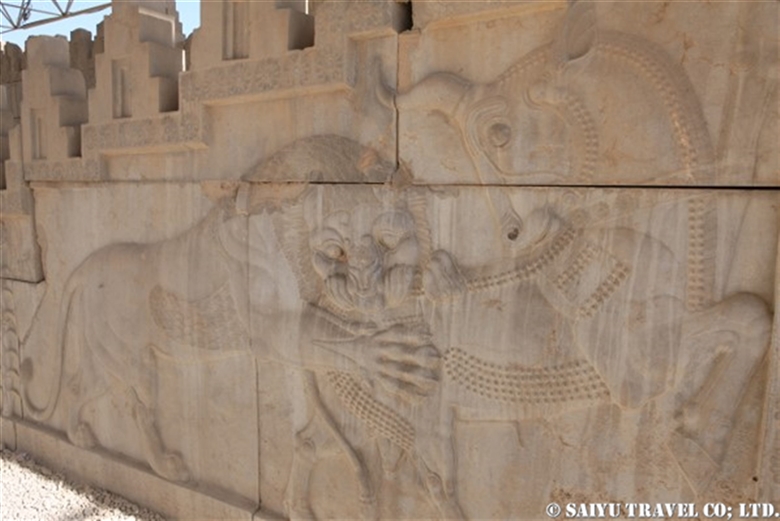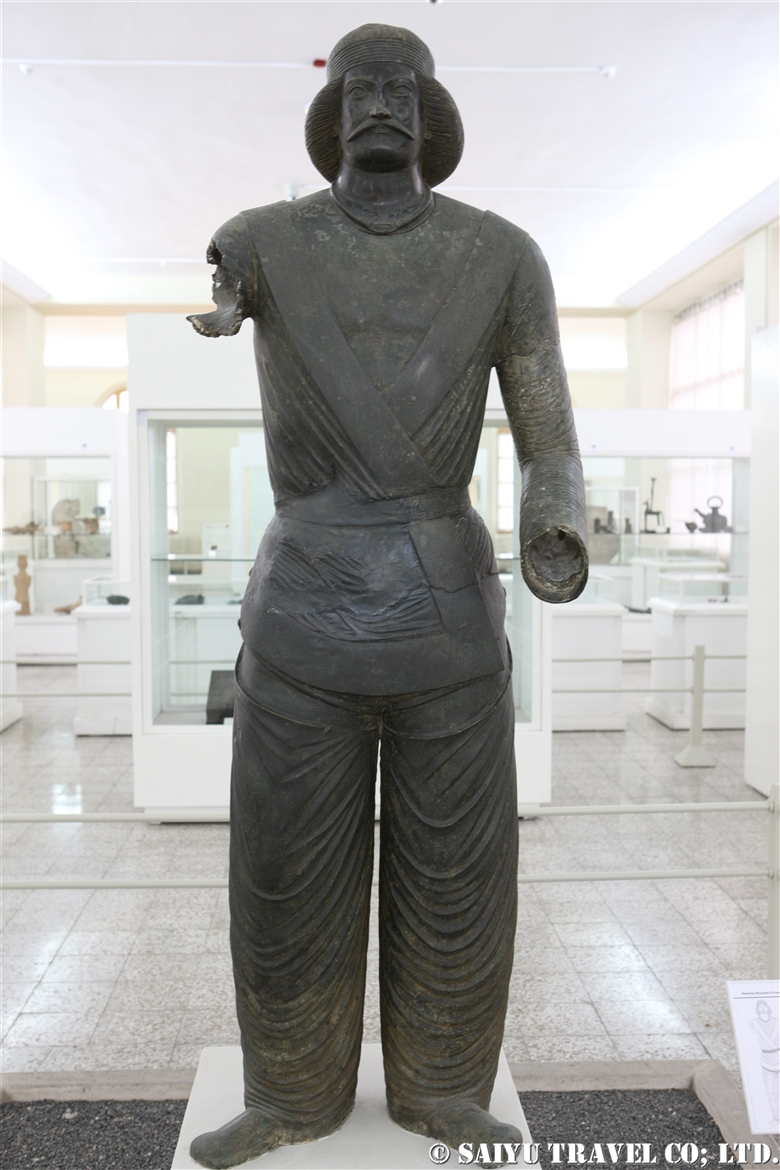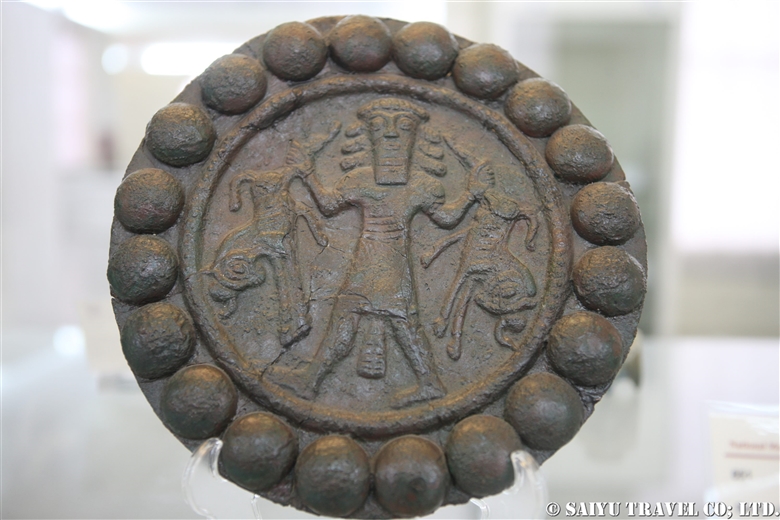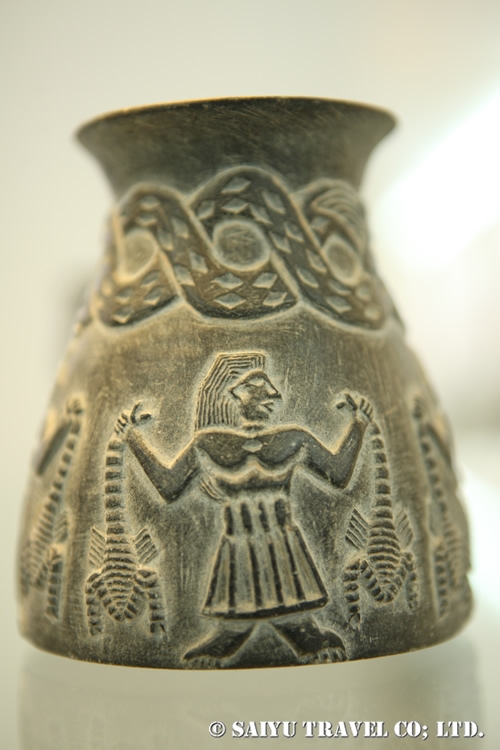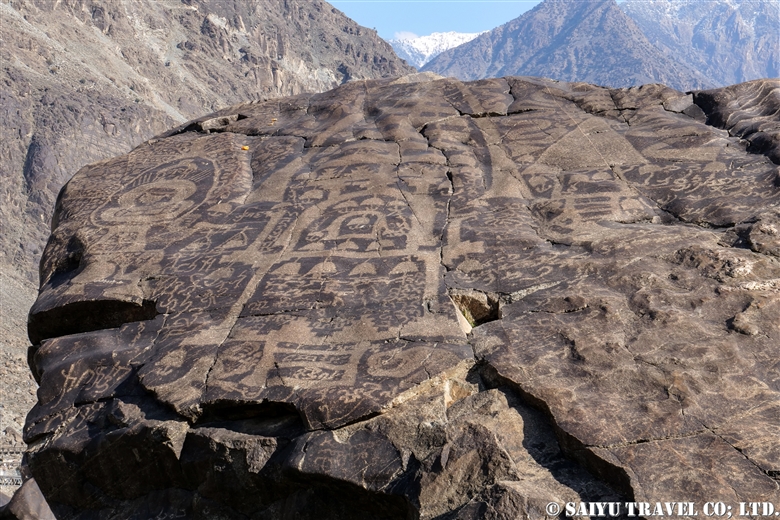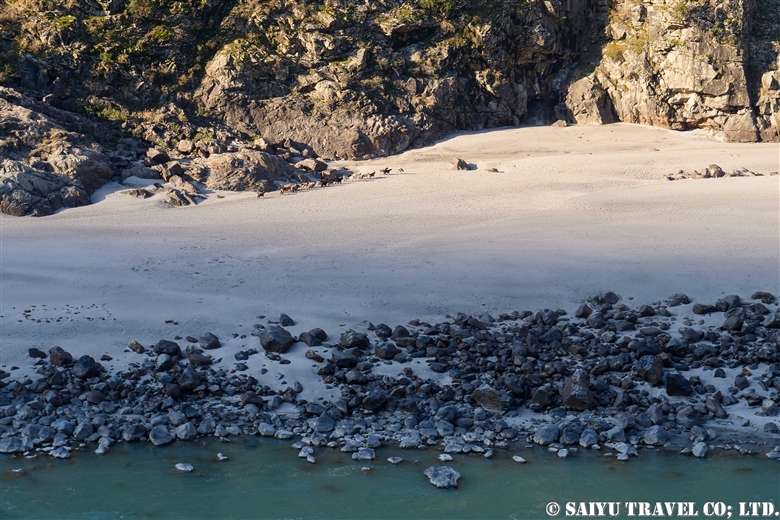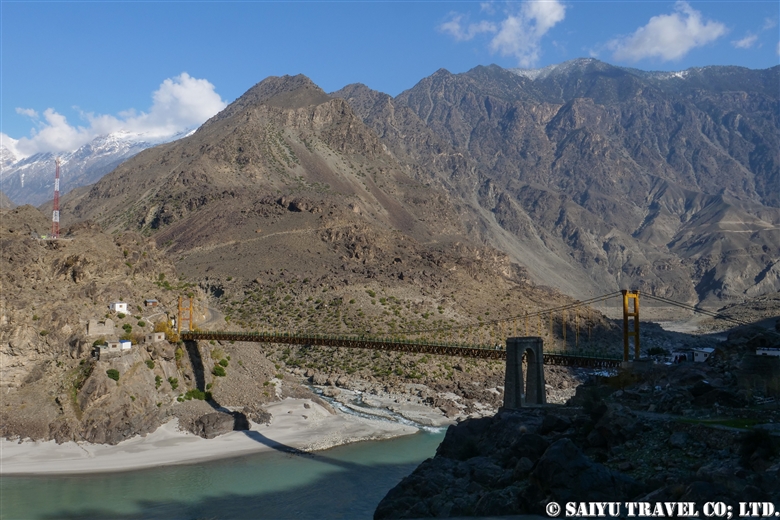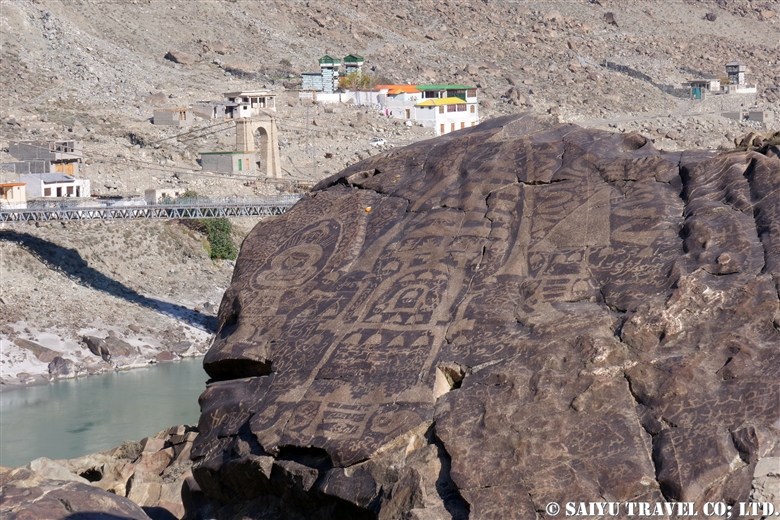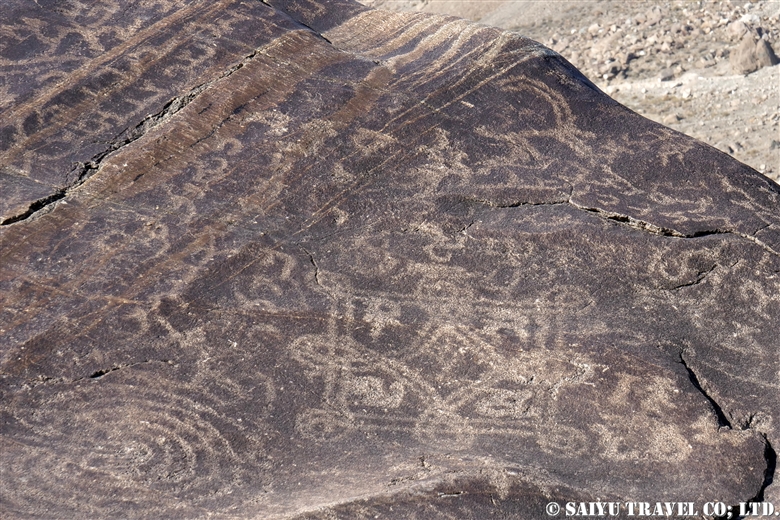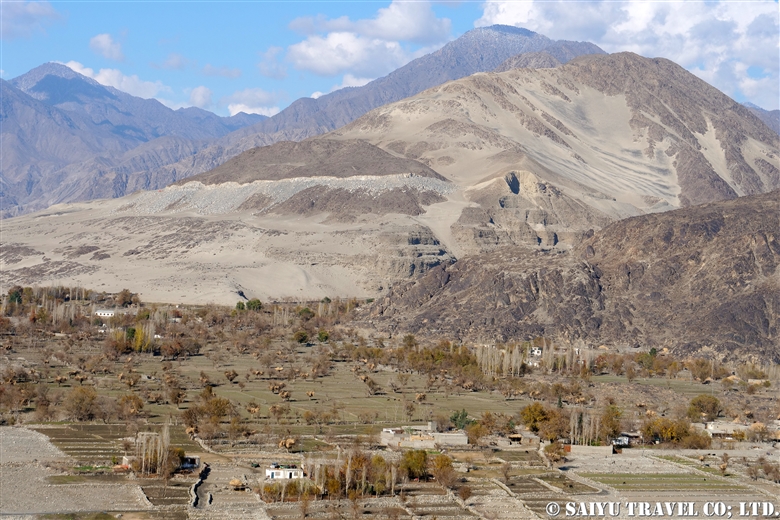
This blog is documenting the precious Silk Road heritage site, the ‘Indus rock carvings’, which will be lost forever in a few years when two dams on the Indus River are completed.
Stunning stupa depictions and inscriptions, “rock carvings of Shatial”
Shatial Rock Carvings, on a slope slightly off the Karakoram Highway down to the Indus River, located on the south bank of the Indus, between the Darel Valley to the east and the Tangir Valley to the west, were very important site for travelers, trade caravans and pilgrims on the Silk Road.
The rock carving ranges from those considered pre-Buddhist to those from the Gandhara heyday and post-Gandhara eras.
Firstly, the picture below shows the most famous rock carving in Shatial site. This rock art is impactful enough to elicit “wow!” response even from an ordinary tourist.

In the center of the rock is a large, delicately depicted stupa with many bells. On the left is a depiction of the “Sibi Jataka” and on the right is a votive stupa.
On the left side of the rock, the name of the stupa’s builder is inscribed in Kharoshthi script (or Gāndhārī, ancient Indo-Iranian script), which dates back to the 5th century.
Between the stupa and the votive stupa the names of people who lived back then (perhaps, some dignitaries) are inscribed in Brahmi and Sogdian script.

Two devotees dressed in Central Asian-style costumes approach the main stupa from three stepping stones. This staircase leads to a plinth decorated with a ‘four-stepped design’. Two pillars support the beam and the domed stupa. Bells are also attached to the beam, stupa and niche.
The stupa is topped by a series of umbrellas, from the top most of which hang down banners on either side like an arch. Small bells are also attached to the umbrellas, making this rock engraving different and novel from the other stupas.

The votive stupa to the right of the main stupa has four steps leading up to a high base, depicting a triangular stupa with a series of umbrellas above it and flags billowing and fluttering. It is a different style of depiction from the main stupa.

This figure on the left shows the ‘Sibi Jataka’.
About Sibi Jataka
(The Jataka is the stories of former lives of the Buddha )
There was a kind-hearted king named King Sibi.
A dove chased by a falcon flew to King Sibi and asked for help.
The falcon came to King Sibi and said, “I have not eaten for many days and if I do not eat the dove, I will die from starvation. Whose life do you consider more important, the dove’s or mine?”
So King Sibi thought that the falcon’s life is also important, so he cut off a piece of meat from his own leg, weighing the same as the dove, and placed it on the balance. But the dove was heavier, so he cut off the flesh again and placed it on the balance, but the weights were not equal.
King Sibi thought deeply and put his own body on the balance, and it balanced. The king said to the hawk, “Please eat me and get well”.
King Sibi tried to save the dove’s life by giving his own life to the falcon.
The falcon, knowing King Sibi’s heart, appeared to him in the form of Indra God and he saluted King Sibi’s action by saying, “You will become a Buddha in the future”.
In this rock carving, the Buddha sits in a cave, holding a ‘dove’ in his hand. The person depicted on the right holds a balance. The object on the balance is the flesh of King Sibi, which was cut off to save the dove’s life.
Below the Buddha holding the dove, devotees are depicted on both sides.
The above description is just one of many stories behind carvings in the main stupa. Shatial site has many other unique, valuable iconographies.

This is the carving on the rock opposite the main stupa, “Yantra”, a holy set of symbols at the center to the right, and “Labyrinth” on the bottom left.


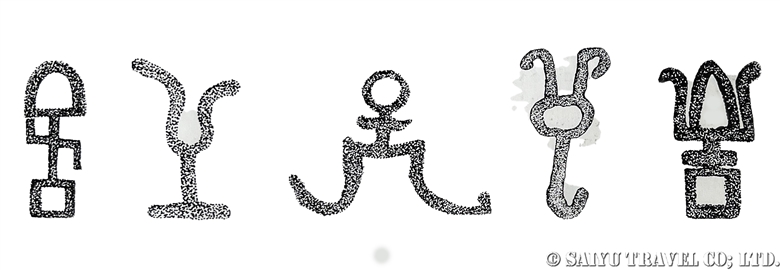
Above and below are Sogdian tamga, emblems used by ancient Eurasian sedentary and nomadic tribes and their influenced cultures, represented in rock carving.



It’s difficult to see, but can you see the person holding what looks like a cup?
This is a rock carving of Sogdian performing a ritual in front of an altar, most probably. Probably a fire worship ritual?
Other animal rock carvings are depicted by people who walked the Silk Road. The rock carvings in the upper Indus, Gilgit and Hunza river basins are mainly ibex wild goat, with snow leopards and markhors goats, but here we see camels and elephants depicted.
The elephant figures remind us of the proximity to India. Apart from the picture below, there were several rock carvings that appeared to be camels and elephants, but only those that more or less certain are shown here.



There is always something new to discover at the Shatial site.
By the way, the village seen from the rock carving site is full of dwellings that have been built at a rapid pace to get compensation for the submerged dwellings caused by the dam. The environment around the ancient rock carving has changed considerably.
Photo & text : Mariko SAWADA
*About the article: the article is based on an old book. I wonder if other views and explanations exist. I would be very happy if you could let me know so that I can study it.
Reference :”Huma records on Karakoeum Highway”, ” The Indus, cradle and crossroad of civilizations”
*Contact us, Indus Caravan for more information or to make arrangements for visiting Rock carving along the Indus.
*Please follow us on Youtube, Instagram & Facebook
Category : ◆Khyber Pakhtunkhwa > - Indus river bank > ◇ Rock carvings / Petroglyph > ◇ Heritage of PakistanTag : Pakistan tour operator , shatial buddhist rock art , Pakistan Photography Tour , buddhism , Pakistan Blog , Indus river , buddhist art , Pakistan Travel Blog , silkroad , Travel Pakistan Blog , Shatial Rock Carving , Buddhist rock art , Wildlife of Pakistan , Chilas Petroglyph , Rock Carving , Chilas Rock Carving , Indus Caravan , Petroglyphs , Saiyu Travel Pakistan , Diamer-Bhasha Dam , Pakistan Travel company , Rock art



































